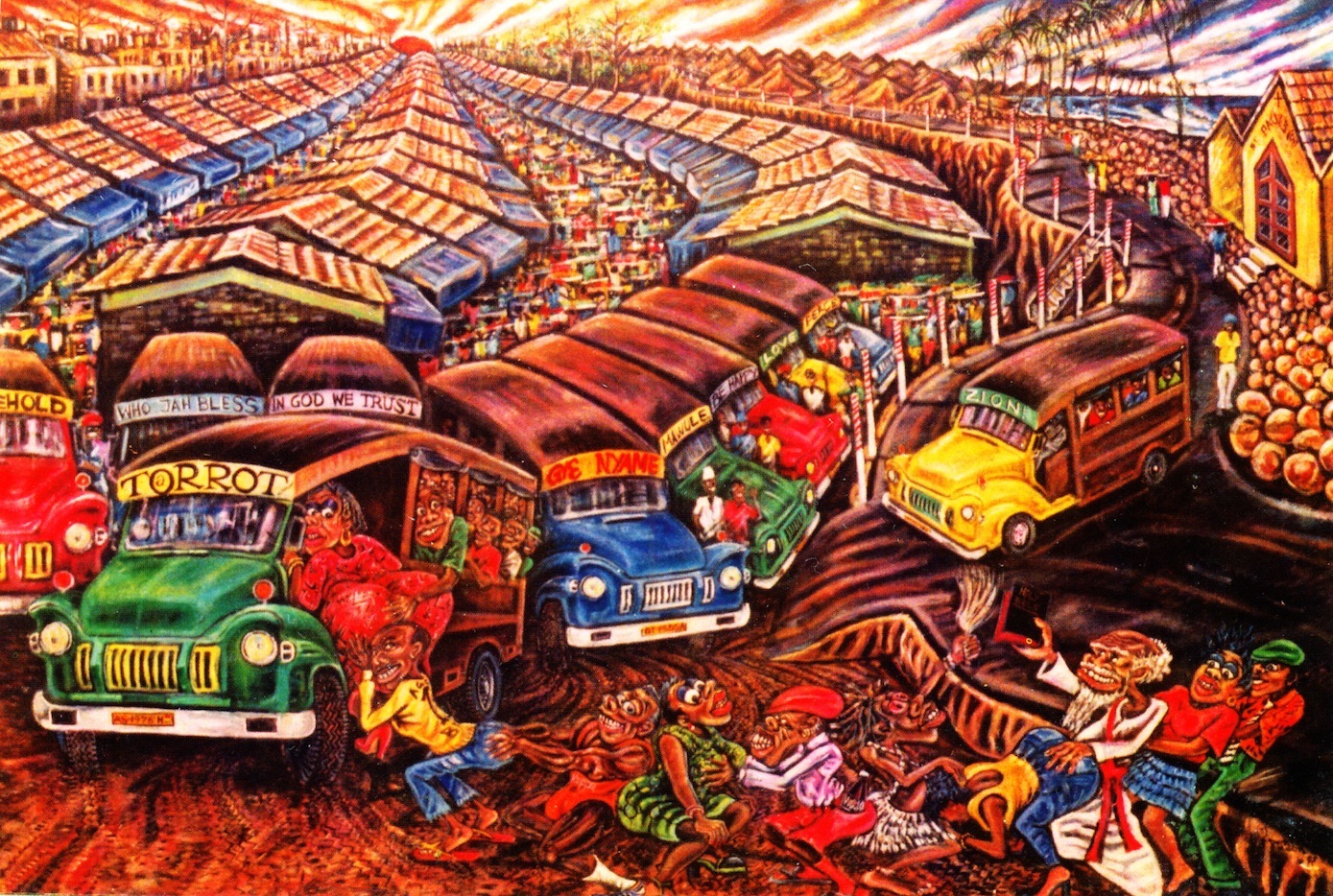
Kumasi Realism
--- 1951 - 2007
An African Modernism
Atta Kwami
(Ghana Denmark Cultural Fund
Hurst & Company)

John Picton was visiting Kumasi, the capital city of Ghana, in 1995. He became interested in what we might call street art, signs, artwork aimed at consumers, "commercial" art visible on the streets. He started taking photographs of a sign advertising "The Picasso Bar," "lettering embellished by several Mickey Mice and bottles of beer." A young man came out and asked if he had permission to take the pictures, and Picton apologized, and asked who he should go to for permission. He replied, "Me!"He agreed that I could continue, but please would I buy him a bottle of beer. This was done, and when I had finished taking my pictures, I went into the bar and asked, "Please may I know your name." He replied "Elvis Presley."
Thus begins a lively introduction to the fascinating street art (and street artists) of Kumasi by Picton --- and the factors that caused Atta Kwami to bring together his interests in this fine book.
Entitled Kumasi Realism 1951 - 2007, it runs well over 400 pages, is jam-packed with pictures, drawings, paintings, photographs, cartoons, oils, watercolors, acrylics, billboards, signs, shirts and pants with their own special drawings, and in one spectacular section, photographs of roadside royal palm trees decorated with colorful lettering, symbols, cross-hatching, rings and circles --- these last done by Kevin Amankwah (known as "Caricatcha.") Amankwah has also drawn cartoons of buses jammed with scary characters, kangaroo-like creatures standing around, hammers and saws in the hands of wild-eyed men, mouths wide, eyes wild, baseball caps and words flowing out THIS IS LIKE JONAH IN THE BELLY OF THE WHALE, all working over the body of the bus which carries the inscription TO ERR IS HUM. On the next page, we find shirts and pants mounted on a board, with the words WHO SAYS A CHIMNEY IS A NON LIVING THING? Who indeed?
Picton tells us that Kwami was troubled by an exhibition that appeared at the Centre Georges Pompidou in Paris, 1989. It was titled Magiciens de la terre and he says it was one that "many of us loved to hate." The reason: it classified African art, "the extraordinary diversity of current and contemporary production in a context in which the old ethnic labels served no immediate purpose." The antidote to this old, wheezed-out view of the real world of the Asante nation was, in Picton and Kwami's eyes, the public art along the streets and highways of central Kumasi, "a public art celebrating mythic and social episodes in the life of the Asante nation; the painted walls and shop fronts --- trousers, electric fans, locks and keys." Picton refers to it as "aspects of contemporry Ghanaian visual culture." It is this vision of a live culture that made it possible for him to meet Elvis Presley, but with the caveat that "'Elvis Presley' in Kumasi had no significance for American popular music. Rather, the American music industry created a name to be conjured with."
That a Kumasi painter should call himself by that name is surely no more than a way of attracting attention, a sort of visual "shouting," in a very busy and noisy urban environment.
Again, the Picasso Bar in Kumasi "has no significance for European modernism. Rather, through the genius of a Spanish painter another name to be conjured with was created."
That a Kumasi bar should be given that name was, again, no more than a means of attracting attention.
§ § § Kumasi Realism with its hundreds of reproductions is obviously a grand view of a grand culture of art. Kwami is an independent art historian and curator, was Visiting Fellow at the Cambridge/Africa Collaborative Research Programme, Art and Museums in Africa. His vision of the decorative and the representational are all-inclusive. Not only is it affecting, it is infective.
Those of us who have a chance to read through it --- and I was hard-pressed to leave it alone for a week or so --- will find our own favorites here. In the introduction you'll find striking canvas acrylics by Ekow Bentil from 1974, dancing figures, musicians in the most formidable linear patterns that strike one as Matisse with a vengeance. Then there's a compelling portion of a mural at the College of Art at Kwame Nkrumah University of Science & Technology by Leticia and Georgina Azuru Avoka that brings to mind Picasso. Some dancing figures by Ablade Golover --- named "Market Forces II" --- utilize the same force fields as Bentil's figures. Finally, Daniel Mensah's "Tronto Station" painted in 1998 [See Fig. 1], brings together a colorful street art: buses packed together in lovely ordered disorder and random joy.
It's easy for an outsider to pick and choose, but the key to Kumasi Realism is to accept it as it is: a labor of love, seeking to join the art of life and life of art ... the life of the street enriched by the colorful signs, figures, bodies, clothing and --- yes --- even royal palms cut and tinted to give the feeling of life, that which is the world of Ghana brought home to all of us in a fine presentation of reality of life and the life of reality.